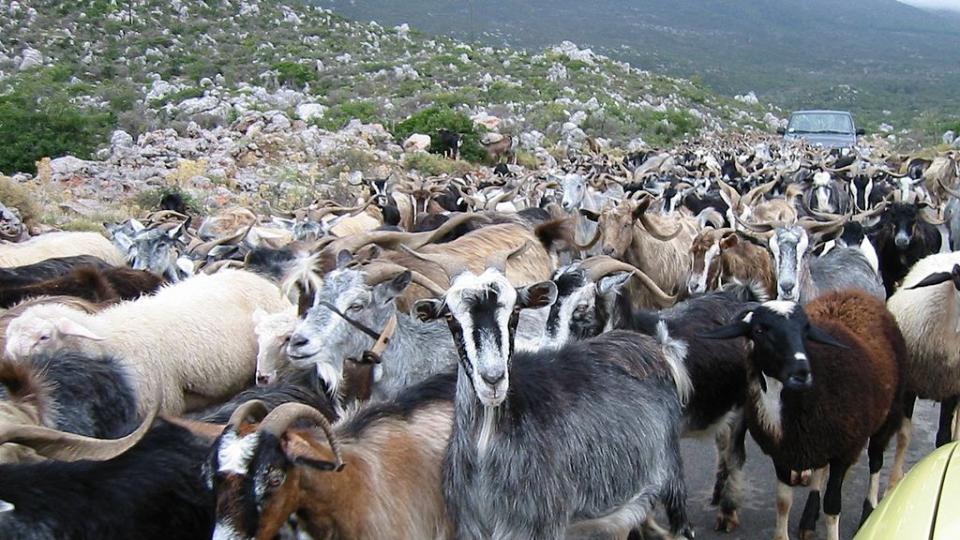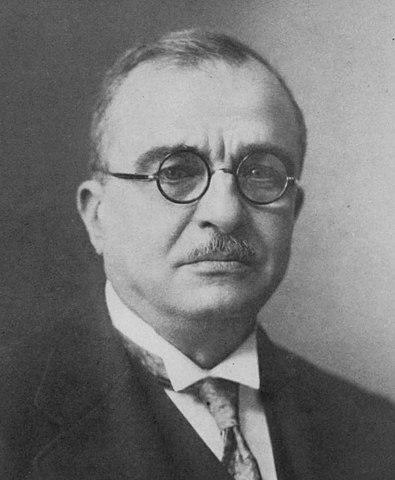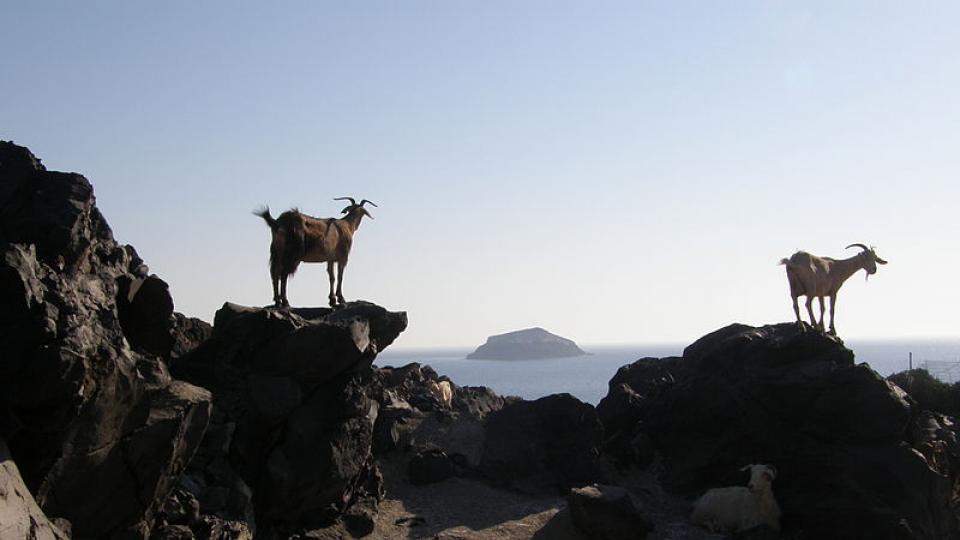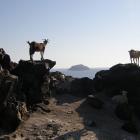Grazing is an old practice in the countries of Southern Europe, where livestock farming was the main human activity, supporting the economies and the societies, and shaping the ecosystems and landscapes of the Mediterranean. In discussing the factors underlying deforestation in the Mediterranean, goat grazing is considered the main factor. In the past, it was widely believed that goats per se were the real culprit, and not the continuous, uncontrolled overgrazing for which humans are responsible. All domestic animals, if they are not managed properly, can damage forests through overgrazing. The Greek state, from the early years of its liberation from the Ottoman Empire, took decisive measures to tackle the problem of overgrazing, especially by reducing the numbers of goats or even eliminating them completely.

A herd of goats in the Greek highlands.
A herd of goats in the Greek highlands.
Photograph by AlMare, 2006.
Accessed via Wikimedia. Click here to view source.
 This work is licensed under a Creative Commons Public Domain Mark 1.0 License.
This work is licensed under a Creative Commons Public Domain Mark 1.0 License.
The Royal Decree of 9 September 1836, “On regulating forest grazing,” established a committee responsible for distributing the grazing land, which was located in forested areas, to farmers. A very interesting part of the decree is the term “voskologos,” meaning a state employee with the task of marking with straw the areas in which grazing was prohibited. The law of 18 February 1864, “On land forage,” established a set of rules about granting grazing rights in community pastures, including farmland. For the first time, there was an attempt to define pastureland, but it was ineffective.
With the law of 1 January 1869, “Concerning forests,” an effort was made to solve the issue of grazing. According to the law, forest employees determined the season and the way animals would graze in forests, following a detailed statement by the mayor or each community leader describing the number and the species of animals brought by the villagers for grazing. The law of 14 February 1912, “Establishment of municipalities,” granted municipalities ownership of pastures previously controlled at the national level.

Ioannis Metaxas (1871–1941)
Ioannis Metaxas (1871–1941)
Unknown photographer, 1937.
Accessed via Wikimedia. Click here to view source.
 This work is licensed under a Creative Commons Public Domain Mark 1.0 License.
This work is licensed under a Creative Commons Public Domain Mark 1.0 License.
During the interwar period (1936–1941), one of the top priorities for the dictatorship of Ioannis Metaxas was agriculture, because as he claimed, “farmers are the driving force in creating wealth in the country.” The Metaxas regime gave also special emphasis to the new forestry policy. Along with measures in agriculture and livestock farming, a large-scale reforestation campaign was launched across the country and strict restrictions were put in place on the number of goats, on the extent of pastureland, and on grazing rights, because as Metaxas put it, “Goats and forests cannot coexist.” With this quote from his speech, in Aigio in the Peloponnese, on 31 October 1937, it was obvious that the regime was attempting to prevent deforestation. And the big decision to “declare the war against goats,” and generally to restrict livestock in the forests of the Greek countryside, was taken in the same year following the proposal made Petros Kontos, a professor in the Forestry School of the University of Thessaloniki.
Prior legislation in Greece did not deal effectively with the problem of overgrazing. Seventy percent of the Greek land was available for grazing, but livestock breeders protested that the pastureland was insufficient, asking for the bans to be lifted. Greece was the country in Europe with the largest number of sheep and goats. The total number of goats in 1937 was 5.5 million, or 80 goats per hundred citizens (a proportion of 80%). During the same period in Turkey, the proportion was 55 percent, in Bulgaria 23 percent, in Serbia 21 percent, in Spain 18 percent, and in Italy the proportion was four goats per hundred citizens.
With the mandatory law of 1937, it was determined that goats would be removed from all fir forests of the country. But at the same time the livestock breeders would be compensated and they would be offered farmland in public forest grounds. Grazing was also prohibited on reforested land, in burnt woodland, and in protected areas. The legislation was so strict that it required the slaughter of the livestock by the forestry police, if the livestock entered a restricted area. Keeping sheep and goats in inhabited areas was prohibited for reasons of tourism and public health, a major problem at the time.
Georgoulas Beikos, a journalist and later a high-ranking member of the Communist-backed resistance group National Liberation Front (EAM), claimed that it was widely believed that the Metaxas regime slaughtered six million goats, damaging the economy of mountainous Greece. Meanwhile, Kostas Voulgaris and Nikos Theordoridis, researchers at the Forest Directorate of Dodecanese, said that during the years 1939 and 1940 five million goats were slaughtered. But the data derived from the archives of the state’s statistical agency showed that the above estimates were overexaggerated. The number of goats declined by almost one million between 1937 and 1940, following the implementation of the mandatory law.

Goats on the island of Palea Kameni, Santorini.
Goats on the island of Palea Kameni, Santorini.
Photograph by Yarl, 2008.
Accessed via Wikimedia. Click here to view source.
 This work is licensed under a Creative Commons Attribution 2.0 Generic License.
This work is licensed under a Creative Commons Attribution 2.0 Generic License.
With the new policy, the “employment map” of the country’s mountain populations changed by turning livestock breeders into land farmers—a change that, without impeding the livestock farming, benefitted the forest by means of diminished overgrazing. In addition to this, Panagiotis Dekazos—agronomist, minister of agriculture (1934–1935), minister of national economy (1936), director of the Greek Agricultural Company (1926–1944), and member of the Supreme Economic Council (1932–1936)—avoided taking extreme measures and thereby established a harmonious relationship between agriculture, livestock farming, and forestry.
How to cite
Kostopoulos, Giorgos. “The War Against the Goats in Interwar Greece.” Environment & Society Portal, Arcadia (Spring 2020), no. 8. Rachel Carson Center for Environment and Society. doi.org/10.5282/rcc/9011.
ISSN 2199-3408
Environment & Society Portal, Arcadia
 This work is licensed under a Creative Commons Attribution 4.0 International License.
This work is licensed under a Creative Commons Attribution 4.0 International License.
2020 Giorgos Kostopoulos
This refers only to the text and does not include any image rights.
Please click on the images to view their individual rights status.
- Beikos, Georgoulas. I Laiki Exousia Stin Eleftheri Ellada [People’s power in free Greece]. Vol. 1. Athens: Themelio, 1979.
- Dekazos, Panagiotis. To Ktinotrofiko Zitima Tis Ellados [The agrarian issue of Greece]. Athens: Apatsidis, 1940.
- Grispos, Panos. Dasiki istoria tis neoteras Ellados [Forest history of modern Greece]. Athens: Ministry of National Economy, 1973.
- Hadjigeorgiou, Ioannis. “Past, present and future of pastoralism in Greece.” Pastoralism 1, no. 24 (2011).
- Kontos, Petros. Dasi Kai Ktinotrofia Stin Ellada [Forests and livestock farming in Greece]. Athens, 1932.
- Metaxas, Ioannis. Logoi kai Skepseis 1936–1941 [Speeches and thoughts 1936–1941]. Vol. 1. Athens: Govοstis, 1969.
- Voulgaris Kostas, and Nikos Theodoridis. “Problem of Uncontrolled Grazing in the Prefecture of Dodecanese.” In Range Science of Xerothermic Areas: Proceedings of the 5th Panhellenic Rangeland Congress, Heraclion of Crete, 1–3 November 2006, edited by Vasileios Papanastasis and Zoi Parisi.








